#Chilean fauna
Explore tagged Tumblr posts
Text

Eu te amo chinchilla
20 notes
·
View notes
Text
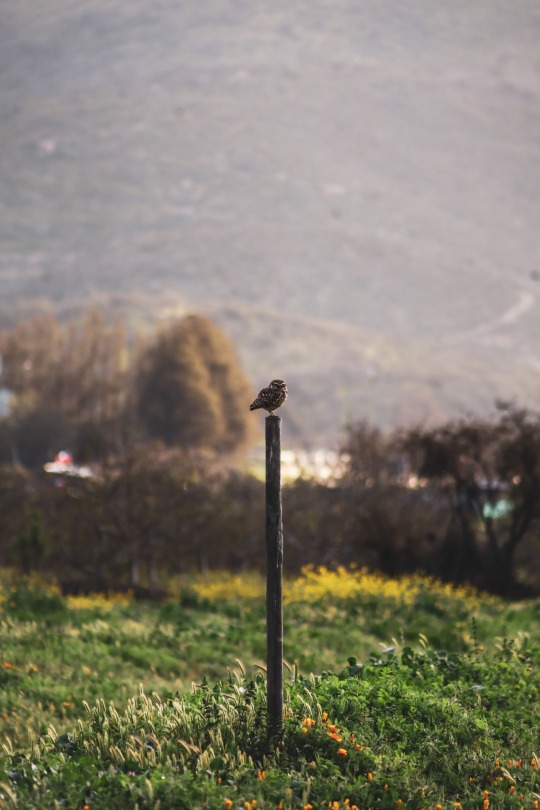
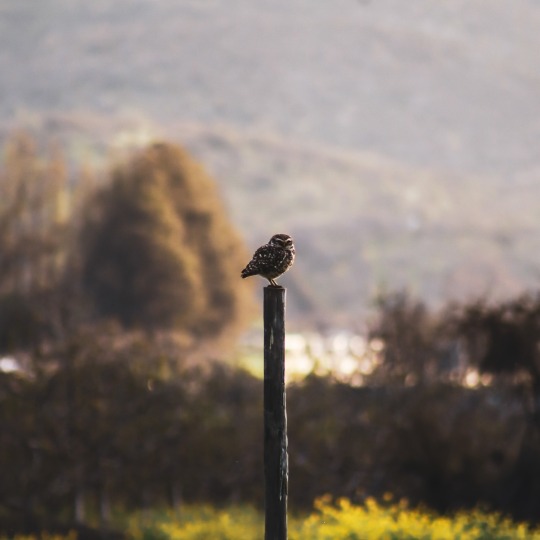
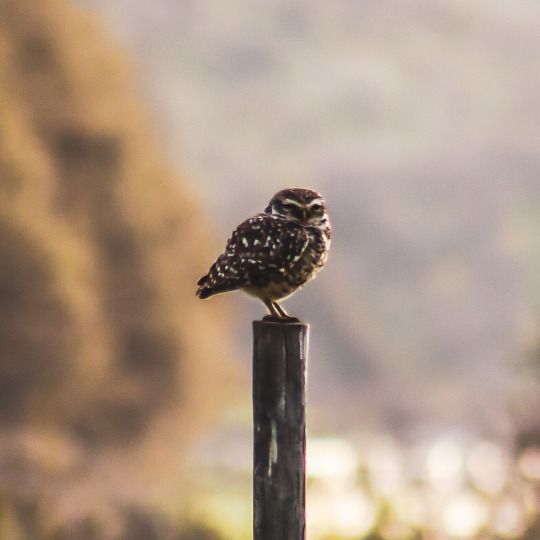
#street art#street photography#aesthetic#landscape#photooftheday#portrait#fashion#photobook#magazine#photoart#nature#birds#bird photography#chilean#flora and fauna
7 notes
·
View notes
Text
.
#i have been feelin v 'plz lemme off this ride‚ if for no other reason than just t have 1 min t hurl‚ plz' l8ly#what w my mood & energy & circumstances all pinballin arnd me#but nothin quite graphically depicts tht like th fact tht#i just made tea#& now im sweatin from tryna teach myself basic steps for both cumbia & merengue#cos i stumbled inta a song by a chilean artist on yt & omw t look th song up on spotify i stumbled inta El Beeper#but legiterally. right b4 all tht started i was abt t go t my bed t curl inta th fetal position#& i cldnt cos i hadta w8 for my water t boil#like. atleast either way im not cold#but now idek if my tea is hot or not#also th song by th chilean artist is#el baile del kkoyaruna by pascuala ilabaca y fauna
1 note
·
View note
Text
General Carrera Lake, Marble Cathedral, Chilean Patagonia: One of the world’s most remote regions, Chilean Patagonia astounds visitors with its magnificent & imposing natural landscapes, fjords & glaciers, together with highly diverse flora & fauna. In the far south (General Carrera Lake and the Marble Cathedral, San Rafael Lake, Carretera Austral, Torres del Paine, Punta Arenas and the Strait of Magellan etc), which extends from between 42° south latitude to Cape Horn, the Andes & the South Pacific... Formed over 6,000 years by wind and water, the Marble Cathedral rises from Lake General Carrera, its swirling blues a reflection of Patagonia’s untamed spirit... General Carrera Lake is a deep lake located in Patagonia and shared by Argentina and Chile. Wikipedia
#General Carrera Lake#Marble Cathedral#Far South#Chilean Patagonia#Chile#South America#South America continents
566 notes
·
View notes
Text
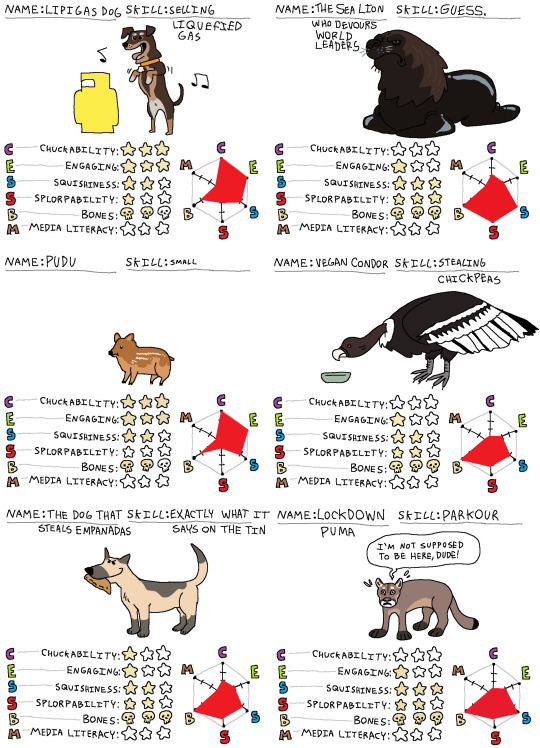
Here's my Pokémon Little Guys team. It's a thematic team where all the Guys get buffs that apply to the Beast, Televised, Chilean Fauna and Brown keywords.
Besides using keyword abilities, the strategy when using this team is pretty straightforward: You chuck (Chuck 3 is useful here) Lipigas Dog (Music) and Pudu (Appeal) to the center of the field to produce Fun and distract the opponent's Guys, while The Dog that Steals Empanadas (Stealth) and Vegan Condor (Flight) move around the flanks to steal the opponent's Snacks and deny them of resources, meanwhile The Sea Lion WDWL (Swim) fights for water control and is ready to pick anything that falls off into the water, and finally Lockdown Puma (Climb) moves around the field in order to exploit any opportunity that arises, moves your Chuck 3 Guys around and keeps your opponent guessing as to whether it is safe to attack your base.
The big weakness of this team is its complete lack of Media Literacy. If you're playing as part of an Alliance this team can synergize with a Brainy, Trickster or Cool Dude team easily. Otherwise, my recommendation is to hit the opponent fast before they can set up any Shenaniganry.
This is a simple team, but it's not for the faint-hearted. Hit fast, hit hard and keep your opponent on the defensive to maximize your advantage.
205 notes
·
View notes
Text

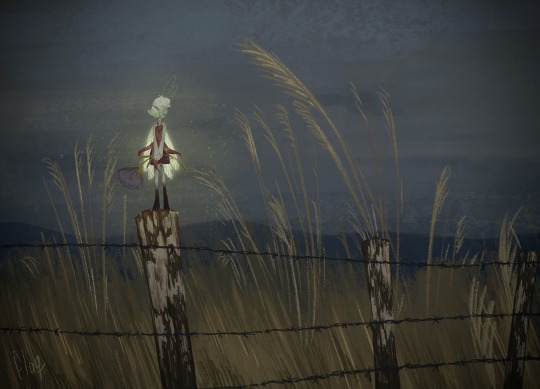
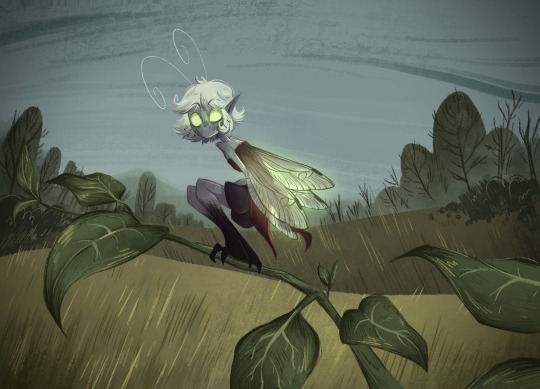
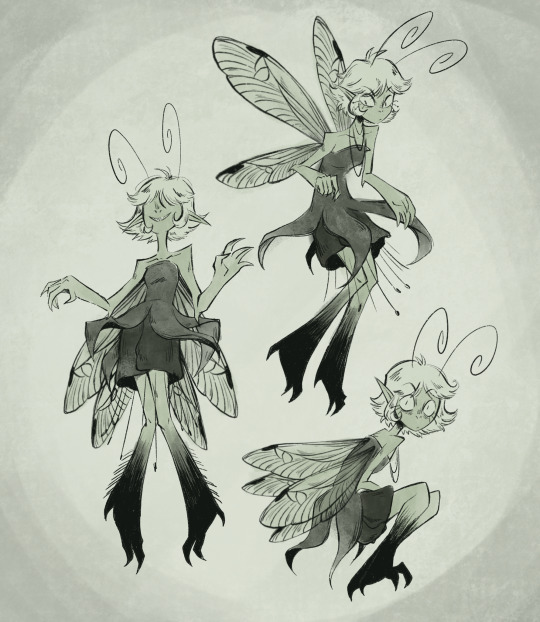

backgrounds and character design for one of my finals!
the assignment consisted on creating a character based on the flora and fauna of Chile. I decided to create a fairy character based on the chilean native flower chilco (hardy fuchsia). In the concept i created for this character, fairies are an invasive specie native to Europe and they’ve adapted to living in Chile after being introduced by European immigrants in the late 1800’s by wearing native flowers as clothing and morphing their wings to resemble local insects.
#all the lore i’ve created for this fairy is canon in parasomnia btw#art#my art#character design#background art#parasomnia#animation student
491 notes
·
View notes
Text
Dust, Volume 10, Number 7

Obsessed with Congo Funk in this month's dust
Without getting too deep into American electoral politics, let’s just say that we’ve been distracted lately. We’ve been mired in the slough of despair, frantic in our bargaining with god and lately, a feeling fresh breeze of optimism—it’s been so long, we hardly recognized it. But despite all that, the records keep coming, and we do our best to deal with them, not always with a fulsome 300-400 word review, but sometimes briefly, as here, in another edition of Dust. This month, we cover the run of it, from fictional characters that somehow participate in bands, to guitarists on synth holiday to vintage Swedish death metal reissued and more. Participants this time out include Jennifer Kelly, Byron Hayes, Bill Meyer, Jonathan Shaw, Christian Carey, Andrew Forell, Roz Milner and Ian Mathers.
Apifera — Keep the Outside Open (Stones Throw)
Four Israeli jazzmen take a jaunt through psychedelic rock and prog, incorporating trippy vocals and squalling synth runs into a space-age fusion. The musicians— Nitai Hershkovits on keyboards, the beatmaker (and evident link to Stones Throw) Yuvi Havkin, drummer Amir Bresler and guitarist Yonatan Albalak—have spent their careers crossing jazz with funk, hip hop and rock. Here they push it even further with vocal tracks that hardly sound like jazz at all. Trippy “Iris Is Neil,” for instance, delivers the title phrase in a keening vocal chant, as explosions of percussion go off like firecrackers on a string. Squiggles of synth, arcs of electric guitar reach for the epic, but in a manner more like Yes or ELP than Return to Forever. “Lucky Zoe” delves further into psychedelic pop, its wavery keyboards framing fanciful whimsies a la “Lucy in the Sky.” “Theodor Marmalade” thumps a funky beat behind flourishes of keys and vocal narratives about desert fauna. “Don’t you want to see the floating lights?” the cut inquires, and yes, I can just about make out strange, glowing objects in the sky. The instrumental pieces have a more conventionally jazzy feel; “I Love ECM” makes it case with light-fingered syncopations on rims and cymbals, liquid loops of bass and ice-chilled runs of electric keyboard. “Sera Sam,” at the end, brings on the trumpeter Avishai Cohen for a lyrical turn.
Jennifer Kelly
Majesty Crush — Butterflies Don’t Go Away
(Numero Group)
Butterflies Don't Go Away by Majesty Crush
A double LP or digital download from Detroit’s own Majesty Crush, the motor city’s answer to the sounds coming out on 4AD. With dreamy vocals by David Stroughter about being an obsessive fan or about bad relationships and a rhythm section kicking up a swirl of noise around him, Majesty Crush brings to mind about a dozen English bands without feeling particularly in debt to any specific group. Occasionally the guitar makes a really cool, almost crunchy sound, but mostly the music moves in the fog, blanketing the vocals in layers of distortion. They lack the fey lyricism of the Cocteau Twins or the dreamy harmonies of Lush but guitarist Michel Segal holds his own against Kevin Shields’s sheets of sound. Meanwhile, they invoke David Hinckley on “No. 1 Fan,” wake up with a bottle and a cigar in hand on “Brand” and dip into ambient spaces on three small interludes. The first half is made of their lone album Love 15, while sides three and four contain an early EP and singles, putting pretty much their entire catalog into one handy set. These Detroit guys seem unjustly forgotten, but thankfully Numero’s made their music easy to find.
Roz Milner
Dennis Callaci & Heimito Künst — First Light (Pass Without Trace)
Heimito Künst is one of many characters in Chilean novelist Roberto Bolaño’s The Savage Detectives, a tangled multi-narrative epic. The enigmatic Italian musician who produced the sounds underpinning First Light has adopted Heimito Künst as his pseudonym, likely in reference to the knotty soundscapes he builds from organs, synths and field recordings. On paper, Dennis Callaci’s lyrics and vocals seem like an odd pairing for Künst’s oblique audio collages. Callaci is half of the long-running lo-fi pop project Refrigerator and has helmed the Shrimper label for over three decades. His signature mid-range nasal utterances, more spoken than sung, populate the extraterrestrial ecosystems of Künst like strange seedlings peeping up from beneath loamy soil. First Light serves as a bridge between the mysterious and the familiar, another worthy entry in Callaci’s discography and a port of entry into an unknown artist’s body of work.
Bryon Hayes
Buck Curran — The Long Distance (Eiderdown/Obsolete)
Buck Curran is a guitar devotee. He’s a fluent player, a custodian of historic instruments, a chronicler of esteemed players and a compiler of albums that pay tribute to others. But sometimes a guy just needs a change of pace; enter The Long Distance. Mostly competed in a single night, it’s Curran’s holiday from the guitar. Instead, he plays analog synthesizer, layering sweeping tones and helicopter-rotor cadences into something rather like a lost Tangerine Dream album. Curran explains in the album notes that each piece is connected to a memory of a person or place, which may explain the melodies’ intimations of yearning and melancholy. But if you’re not Curran, they might evoke other associations; this music could easily be repurposed for film soundtracks.
Bill Meyer
Rhodri Davies — Telyn Wrachïod (Amgen)
Back in the mid-20th century, kids motorized their bikes with clothes pins and playing cards. The customization might not have yielded much additional propulsion, but the sound was cool. It turns out that they were simply following in the footsteps of 16th century Welsh harpists, who attached brays (slips of wood) to their strings to get a loud, buzzing sound. Rhodri Davies has explored the harp’s options in all manner of settings — Fluxus happenings, minimalist compositions, rock bands, free improv ensembles, the list goes on. Recently he’s commissioned speculative recreations of instruments from centuries ago, which he then uses to play the sort of short, wheels-within-wheels pieces that he formerly played with instruments amplified to a Konono No. 1-level of distortion. On Telyn Wrachïod he turns to the bray harp, which sounds rather like a cross between a banjo and a sitar. Each of its 12 tracks is spiky but so engrossing that you might find yourself hitting repeat a few times before you move on to the next one.
Bill Meyer
Desultory — Darkness Falls (The Early Years) (Darkness Shall Rise)
The repackaging and re-release of underground metal’s extensive archive of hyper-obscure demos and records continues apace. Darkness Falls (The Early Years) collects three demos from Swedish death metal outfit Desultory, originally independently issued on cassettes between 1990 and 1992. The record’s principal interest is its documentation of the sonic flexibility that informed the term “death metal” in the early 1990s; there’s just as much lightning thrash in these songs as there is moldering morbidity, especially the four engaging tracks on the band’s first demo, From Beyond (1990). The title track is especially pleasurable, in its sprinting, bludgeoning fashion — and this reviewer notes the added benefit of the title’s reference to an excellent H. P. Lovecraft story (is that you, Cthulhu?). Swedeath completists take heed. For the rest of us, it’s a fun release, and of some historical interest. Its relative necessity is open to debate — but hey, we didn’t really need that reissue version of Pig Destroyer’s Painter of Dead Girls on “black ice with metallic silver glitter” vinyl, either. Maybe Darkness Shall Rise should get some points for only releasing four different product versions of Darkness Falls….
Jonathan Shaw
Devouring the Guilt — Not To Want To Say (Kettle Hole)
Devouring The Guilt is a Chicago-associated (meaning two members live there and one moved away but remains connected) improvising trio. The line-up is pretty classic — Gerrit Hatcher on tenor sax, Eli Namay on bass, Bill Harris on drums. And so are the trio’s roots. Hatcher summons a burly tone, steers mostly clear of extended techniques, and gives occasional nods to free jazz heroes like Archie Shepp, Frank Wright and Frank Lowe. These familiar parameters establish a framework to display their collective originality, which lies in the personal vernacular they’ve fashioned. Namay is an alternately pithy and seething presence, plucking spare, structure-defining figures or bowing a maelstrom of woody sound. Harris pushes back against expectations that the drums should push the music forward by punctuating his clearly articulated attack with lots of negative space. Hatcher situates lyricism in long, understated tones and vigorously masticated phases, but also navigates unpredictably through the tight corners and sudden gaps that the other two set up.
Bill Meyer
Carol Genetti / Peter Maunu — Gleaners (Amalgam)
No matter how you approach it, Gleaners will stretch your mind. Just what are Carol Genetti (voice, electronics) and Peter Maunu (guitar, violin, mandolin) gleaning? Not other people’s music, that’s for sure. Maybe the languages of long-extinct species, confidences exchanged between dusty appliances that come to life after the staff leaves the thrift shop, ideas about what instruments might sound like if you see them in pictures. Even when Maunu resorts to rock-ish fuzztones or Genetti exhales an unspooling coo, their co-creations are resolutely sui generis. Their partnership has been honed through years of regular performance, often with other Chicago-based musicians, which likely explains the brisk confidence that this resolutely abstract music exudes. Genetti is a ceramic artist as well as a musician, and the physical manifestation of this album comes in two forms. She made ten one-of-a-kind clay cases that you can mount on a wall; the regular CDs come in a folio adorned with close-ups of the art edition.
Bill Meyer
Dave Douglas — GIFTS (Greenleaf Music)
GIFTS by Dave Douglas
With sizzling guitar lines and a frontline horn duo of Douglas and James Brandon Lewis, you’d think it would be easy for this to be a mere blowing session. But it’s not. The music is frequently introspective and has a very ECM kind of ambience: it has this wide-angle sonic clarity where each instrument has room to breathe and let their notes slowly linger. The suite of Strayhorn songs in the middle doesn’t feel tired, either. Rafiq Bhatia’s chugging guitar keeps “Take the A Train” moving while Douglas and Lewis move in sync for the theme. When they stretch out, they’re sometimes playing against each other but always seem like they’re on the same page. Meanwhile Bhatia’s playing draws on Bill Frisell, making up for the lack of a low end with well-placed chords and sonic textures. These four make the music their own and it’s one of the year's most rewarding jazz records.
Roz Milner
Samara Lubelski & Marcia Bassett — Indexical/Rhizome (Relative Pitch)
Samara Lubelski and Marcia Bassett are both well-established members of the U.S. scene that engendered the moniker “new weird America” back in the early aughts. Both have CVs that stretch on for miles. Lubelski is best known as a star in the MV&EE solar system, while Bassett churns out murkier sound pools in a variety of projects, such as Double Leopards and Hototogisu. The pair have a long-standing partnership unfurling phosphorescent drone webs through guitar and violin. This is their eighth recording, and it presents two extended string seances that coax electric spirit whisps from unseen worlds. “Indexical” is the lengthier of the pair and features zoned out but controlled guitar howl from Bassett alongside Lubelski’s rapid bowing. The undulations intertwine to become a radiant lattice of sound. Alien timbres infect “Rhizome,” which sways between a noise-drone wall of sound and hushed electronic whispers. Both are live recordings, showing off the raw magic that this pair of string sirens can conjure.
Bryon Hayes
Joe McPhee With Ken Vandermark — Musings Of A Bahamian Son (Corbett Vs. Dempsey)
Joe McPhee’s been toting folders full of poems and brief musings to gigs for years, but in recent years they’ve assumed an increasingly prominent place in his performances. Now, he’s finally put 28 of them on record, punctuated with nine short soprano sax/clarinet interludes that he improvised with Ken Vandermark. Oppression gets defied, history acknowledged, but most of all, love gets its due. McPhee muses about folks from the neighborhood, jazz heroes that inspired him, old friends now gone, and the balm and galvanization imparted by music itself. Abstract but tender, the interludes amplify this sentiment, showing by example how much appreciation for life and fellowship can be invested in a few tones.
Bill Meyer
Kate Nash — 9 Sad Symphonies (Kill Rock Stars)
youtube
On 9 Sad Symphonies, Kate Nash leans into her musical theater background, with skillfully crafted arrangements that incorporate classical orchestrations reminiscent of the film musicals from the 1930s-1950s. As on most of her albums, she tweaks her sound and musical partners, here working with producer Frederik Thaae. There is a sauciness to her lyrics, which even go so far as describing lunch breaks in toilets. All is not a lark. Nash seeks to exorcize personal demons on “Vampyre” and “My Bile '' is a bracing assessment of a broken relationship. 9 Sad Symphonies may have a bucolic surface, but the singer-songwriter ventures down dark pathways where stars of the Silver Screen would have likely feared to go.
Christian Carey
Occulta Veritas — Irreducible Fear of the Sublime (I, Voidhanger)
Occulta Veritas plays an avant-garde variety of black metal, long on complexity and idiosyncratic compositional sensibilities. It’s abrasive and disorienting, and not especially fun to listen to — which yes, that’s the point, but there’s a huge amount of this sort of thing circulating through the metal underground at any given point, and deliberately distancing music from listeners’ parameters for pleasure can be a tough prospect in that oversaturated context. For this reviewer, the record’s engagement with the theoretical concepts of Jacques Lacan (big-deal psychoanalyst, post-structural Daddy and important player in France’s academic politics of the mid-20th century) helps Irreducible Fear of the Sublime stand out. It’s pretty great that one of the songs is called “Metonimia,” since Lacan’s projection of metonymy along a diachronic axis of spatio-temporal relations fits the music’s tortured snarls and chaotic, off-kilter arrangements. The utterances want to go somewhere, but the structures those utterances are trapped in make meaningful progress a near impossibility. It would be even better to have a lyric sheet, to get more than just the tantalizing engagements with Lacan provided in song titles (“The Mirror Stage,” “Bound to Incompleteness” and so on). There’s an overheated quality to the record that’s additionally compelling: This is your brain; this is your brain on Lacan. But it would be useful to know what specific ideas accompany specific sounds and turns in the music’s syntax. Or is it all just sound and fury, signifying nothing?
Jonathan Shaw
J. Pavone String Ensemble
Reverse Bloom by Jessica Pavone
The current edition of Jessia Pavone’s String Ensemble is reduced to essentials. There are just three players including Pavone, who plays viola, Aimée Niemann on violin, and Abby Swidler switching between those two instruments. The language is likewise paired down on Reverse Bloom. The first two pieces (of four) emphasize long tones that hiss and sigh at a deliberate pace, evoking an uneasy state. “Obstructed Current” pushes against the prevailing vibe with jolting, energetic phrases that move joltingly out of synch. The closing piece, “Embers Slumber,” likewise explores contrasting elements, which resolve by settling into a deliberate, belly-breathing rhythm. The album charts a course towards a grounded state that’s not so much a happy ending as a sonic enactment of the honest word that gets you through.
Bill Meyer
Keith Rowe / Gerard Lebik — Dry Mountain (Inexhaustible Editions)
Dry Mountain by Keith Rowe / Gerard Lebik
Despite having his name on the spine, Keith Rowe did not play on this record. However, he did originate the process of sound (re)imagining that it presents, and his cover image of a wiggling digit raises the question — how deep does a fingerprint go? The score of Dry Mountain originated from the imprint Rowe’s gear left on a sheet of paper. Rowe and Gerard Lebik interpreted that score and then handed a recording of their performance to three visual artists, who created their own scores based on what they heard. These scores were then played by the group of electronics, string, and percussion players heard on this album while listeners drew responses to the music, which they then handed to the musicians, who played them on the spot. The further you get from the first piece heard, the further the music gets from Rowe’s sound world; in a reversal of Alvin Lucier’s I Am Sitting In A Room, the music gets segmented and defined.
Bill Meyer
D. Sablu — No True Silence (Yes We Cannibal)
No True Silence by D.SABLU
D. Sablu is a New Orleans punk lifer, late of Casual Burns and Feverish, but forced (or inspired or motivated) by COVID to strike out on his own. No True Silence is Sablu’s first full-length, and it’s a killer, a slaughterhouse frenzy of punk /garage/ hardcore and a little metal, all chopped up with chainsaws and spraying all over the walls. Indeed, you’ll have to stand well back from the player when you first put the record on, because it leads with “Bomber Stomp,” a two-minute assault of lumbering, heavy punk that sways noticeably as it comes down on the ones and twos. Sablu lets off a howl near the end that raises the hairs on my neck, because it’s so sulfurous and tortured. “69 Forever” lights a new wave hook on fire with a blowtorch; it’s catchy as hell but blows you back with sheer volume and aggression. The brief “World Peace” is pure, adrenalized chaos, drums galloping wildly, guitars flaring, bass buzzing and Sablu screaming “World pee-eeea-eace!” like a banshee. Fun stuff. Turn it up.
Jennifer Kelly
Mark Sims — Take Me Faster (Carousel Horse Records, Old 3-C Label Group, Anyway)
Take Me Faster by Mark Sims
Deindustrialization has hollowed out the Midwest’s economy, leaving shuttered factories and empty main streets all across the central American states. Mark Sims, a bricklayer when he’s not performing, sings with the soft, wry melancholy of a man left behind by tectonic shifts, finding solace in well-turned melodies and plain-spoken turns of phrase. It was fashionable half a decade ago to interview Ohioans in diners about their economic circumstances; Take Me Faster provides the same sort of snapshot of dislocation and disappearing opportunity.
For instance, in “Hold On To Me,” the narrator is driving long-distance to a job somewhere, trying to find a song on the radio and thinking about home. “Money comes and goes so quickly/I could work a million hours/and still be broke when I die,” Sims confides, against a radiant lattice of picking. The song is unassuming, and kind of perfect, a distillation of the struggle to stay connected and human in a low-wage high-uncertainty economy.
The songs are simply arranged, a mesh of Sims’ dusky, resonant voice and acoustic guitar, mostly, with a little synth in the background for texture. And yet, this is more than enough, as on the haunting “I’m Always by Your Side,” where Sims’ voice lifts up through the sadness, fluttering soulfully in the upper registers before drifting back to earth. These songs don’t pull any tricks or do any somersaults, but they’re satisfying all the same.
Jennifer Kelly
Jason Stein / Marilyn Crispell / Damon Smith / Adam Shead — Spi-raling Horn (Balance Point Acoustics/Irritable Mystic)
spi-raling horn by Jason Stein, Marilyn Crispell, Damon Smith, Adam Shead
The trio of Shead, Stein, and Smith first convened with the former two’s duo shared a bill with Smith. They recognized in each other a common aesthetic intent, a shared wish to improvise within a particular set of parameters; there’s no predetermined material, but a collective intention not to be confined to jazz. They’ve all listened closely to the great 20th century European free improvisers, and part of what they’ve taken from them is an intent to fashion their own language. There’s no soloing here, although occasionally someone will drop out if that’s what the music requires. And when they invite a fourth musician into the action, they participate as an equal contributor, not a featured guest. Marilyn Crispell’s associations with musicians as disparate as Barry Guy, Anthony Braxton and Joe Lovano reveal her to be an artist similarly concerned with fluent exchange, not ego-boosting display. But she’s also a stern bringer of velocity and complexity on this recording, which is the studio half of a single brief encounter which took place in Chicago in the middle of 2023. Dense assertion, abrasive texture, and bursting co-existence cohere into a seven-part sequence of collaborative invention.
Bill Meyer
SUSS — Birds & Beasts (Northern Spy)
Birds & Beasts by SUSS
Gorgeous hovering tones of pedal steel, guitar (with e bow), keyboards and synths coalesce in these cuts, each a glowing, vibrating meditation on the beauty and fragility of the natural world. SUSS, from New York City, explores many of the same haunted textures as Chuck Johnson and Pan*American, letting sustained notes linger in shimmering layers of slow-moving sound. “Overstory” encases picked acoustic notes in a translucent amber of pedal steel arcs and violin, letting the sound grow as slowly—and as enormously—as old growth forest. “Flight” follows a more pronounced rhythm than other cuts, its steady pulse of strumming beating like wings on a long trip south. The disc is not all sunshine, however. “Prey” lurks in ominous buzzes and hums of feedback, building threat into dark-toned dissonance and animal screeches into wails of guitar. The long closer, “Migration,” pulls taut with anticipation, its beat like a metronome, its melody unfurling in the wheeze of harmonica and the shifting twang of pedal steel. SUSS often gets tagged as cosmic country, but which country? Unearthly, luminous and beautiful.
Jennifer Kelly
Their Divine Nerve — Return of the Lamb (Staalplaat)
The Return of the Lamb by Their Divine Nerve
Dmytro Fedorenko and Jeff Surak have been collaborating for about 20 years now, but this first album as Their Divine Nerve appears to be the first time the self-described “Ukrainian-American noise duo” have collaborated on record at length. But right from the churning, thumping 14+ minute opener “The Infinity Book” here it’s clear that their long association has led to a certain sympatico comfort with each other. Whether on the more overtly aggressive shredding (not guitar riffs, actual shredding) of “Glowing Skulls” or the more pensive, droning likes of “Dignityphobia,” here the pair have arranged a rich, expansive (71 minutes on CD, plus about another half hour in bonus material on digital) feast for anyone looking to add some variety to their noise diet. By the time the CD thunders and shudders to a half with “Civilization Was Never Civilized” the listener may not know anything more about the titular lamb, but it’s clear its return is momentous indeed.
Ian Mathers
Various Artists — Congo Funk: Sound Madness From The Shores Of The Mighty Congo River (Kinshasa/Brazzaville 1969-1982) (Analog Africa)
Congo Funk! - Sound Madness From The Shores Of The Mighty Congo River (Kinshasa/Brazzaville 1969-1982) (Analog Africa No. 38) by Analog Africa
Mobutu Sese Seko was a murderous tyrant, but he changed African music forever when he invited James Brown to play Zaire 74, the three-day musical festival put on alongside George Forman and Muhammed Ali’s epic Rumble in the Jungle. American funk transformed an already vibrant musical scene like a chemical catalyst setting off an explosion of electrified, psychedelic soul in Kinshasa and Brazzaville. Congo Funk! collects 14 incendiary cuts from the 1970s and 1980s — culling from an original haul of over 2000 sounds — not a dud in the bunch and more than a couple of revelations. M.B.T’s eponymous “M.B.T.’s Sound” is one of the best on this two-disc set, all brassy swagger and intricate polyrhythmic percussion, as is Orchestre National du Congo’s full-throated celebration “Ah Congo!” with its wild call and response, feral sax play and unhinged drumming. Lolo et L'Orchestre O.K. Jazz’s “Lolo Soulfire,” sets up a Stax-like groove and lives in it, slouching and swaggering like Booker T in a fever. Fire.
Jennifer Kelly
Ricki Weidenhof — Church (We Be Friends)
Church by Ricki Weidenhof
A member of Pittsburgh avant-collagists Sneeze Awfull, Ricki Weidenhof examines a life of religious ambivalence and search for identity on their solo album Church. Working through a range of styles that illustrate and amplify those themes, Weidenhof produces an emotionally rich and sometimes challenging fractal mosaic. The wonderfully titled suite “Raptured in Formal Violence” contrasts liturgical solemnity and a babel of religious voices with jittering house to capture that mixture of dread and ecstasy the Church so often induces. At the other of the scale “Dreary Field” is an Arthur Russell inspired idyll of acoustic guitar and cello as Weidenhof singsof the past “I finished that game of hide and seek long ago/Only it was still at play/I remember the last place I had hidden.” “Extinction Meditation” begins in a similar vein, the religious and personal entwined with vivid imagery, before a chaos of multi-tracked vocals, distorted beats, and razor strings. A powerful, heartfelt record that deserves a wide audience.
Andrew Forell
Wormed — Omegon (Season of Mist)
OMEGON by Wormed
It’s hard to say anything meaningful about Wormed — pretty much everything about the band is absurd, or at least verging on it. To identify some key elements of the absurdity: the “vocals” of Jose Luis Rey Sanchez (appearing on Omegon, as always, under the appropriately throaty appellation Phlegeton — Sanchez is likely referring to the mythic river, but all I can think of is phlegm…), for whom the unappetizing term “throat fart” might have been coined; the sheer nuttiness of the band’s tech death wankery, which the band has actually moderated a wee bit for Omegon; the fact that Wormed have been at it since 1999, mostly developing a continuous narrative of a fictional cosmos, full of conflict among evil extraterrestrial forces, multiple timelines and a protagonist named Krigshu (some song titles from this record are indicative: “Aetheric Transdimensionalization,” “Gravitational Servo Matrix,” “Virtual Teratogensis”). You figure it out. Beyond the music — more tech than slam, but still seeking some sort of apotheosis of that quality death metal freaks name “brutality” — what’s most engaging about Wormed is the band’s ability to sustain the absurdity and to seem absolute serious about it. Maybe that makes the Spanish band especially well-suited to our times. Or maybe we just haven’t gotten the joke yet.
Jonathan Shaw
#dusted magazine#dust#apifera#jennifer kelly#dennis callaci#bryon hayes#buck curran#bill meyer#rhodri davies#desultory#jonathan shaw#devouring the guilt#carol genetti#samara lubelski#marcia bassett#joe mcphee#ken vandermark#kate nash#christian carey#occultus veritas#jessica pavone#keith rowe#gerard lebik#d. sablu#mark sims#jason stein#marilyn crispell#SUSS#their divine nerve#ian mathers
7 notes
·
View notes
Text
CHILEAN WILDFIRES DONATIONS
Hi! I don't have a lot of followers but my country, Chile (which you might know as being Pedro Pascal's home country!!!) has been suffering from a lot of absolutely devastating wildfires, especially the Valparaiso Region.



The death toll so far is 122 people, which doesn't take into account that hundreds and hundreds of people have lost everything. Pets and native flora and fauna have been destroyed. Children are supposed to start the school year in march and they lost everything.
What can you do from abroad?
There is currently one NGO that accepts money from abroad via paypal!
Desafio levantemos Chile
And here is how to donate
Go to their webpage in the link above and click the orange button that says "donar" (donate).

Once you click that, it should look something like this:

You need to put the amount in chilean pesos but paypal will charge you in dollars (keep in mind that 1 CLP equals ~0.0011 USD).
It asks you for a chilean phone number, just put +569 (chilean area code) and then any 8 numbers you want.
It also says you need a rut (chilean id number) but people without a rut can just put 11.111.111-1 in order to donate, as it says in this pic

Additionally, Sam Westphal on TikTok is an American currently living in Chile, near the zone most affected by the fires, you can reach out to her on her TikTok account or on Instagram, as she was accepting donations via Venmo for other organizations that do not have the option to send money from abroad, such as the Chilean Firefighters which are a purely volunteer organization.
If you can't donate please reblog to spread the word.
15 notes
·
View notes
Text
just wanted to post this♡
What drew you to witchcraft?
— Patagonia. I live on the chilean side of patagonia, and since I was young, I've been amazed with nature. Last year, I traveled to the argentinean side, which was at the same time I was reading Aldo Leopold and Arne Naess. When I was there, in the "bosques cordilleranos," I felt so connected to earth and its cycle. Since then, I've been getting into wicca, paganism, and witchcraft
Do you follow a specific witchcraft tradition, or are you eclectic?
I'm eclectic and solitary
Do you believe in the Threefold Law or karma in witchcraft?
not really
What advice would you give to someone who feels called to witchcraft but is unsure where to begin?
As someone who's that someone, I would say that is some type of call of nature, and avoid the structure of wicca
What tools or items are absolutely essential for your practice?
native flora and fauna and other items from nature, I barely use anything else
Have you ever had a dream or vision that felt prophetic?
A lot, I try to meditate it to find a meaning
What do you think of Aleister Crowley?
who's that💔
Do you think witches can create their own deities?
ofc, witchcraft is rooted in nature, and every individual is free to feel that call how they feel is convenient
How do you feel about people worshiping deities from pop culture?
I've never seen that, but it seems weird since I don't like pop culture
What’s your opinion on the idea that "all magic comes with a cost"?
I think everything in life has a cost, like a cycle, life is all about sacrifice, you just gotta learn to, idk, understand it, receive it, embrace it, live with it
What’s the weirdest thing that’s ever happened to you during a spell?
it's always the wind, like really strong wind pushing me to places where I feel I must be
If you could cast one spell right now, what would it be and why?
Something for the relief, I gave the test for the university admission and it's driving me crazy, I would like to take that stress away
What’s your belief on the afterlife, and how does it affect your spiritual practices?
I believe and that old Carl Sagan quote about us being stardust. The afterlife comes with becoming one with nature once you get buried, one must take care of the earth for when that time arrives
What’s your opinion on the importance of connecting with the land in witchcraft?
For me, it's the most important. Most witchcraft comes from the gift earth gave us, I worship earth, nature, the wind, the water and everything that takes part in this beautiful cycle
How do you feel about using magic to influence others?
I don't like that, I defend everyone's free will, however, I use to cast spells and pray for the protection and happiness for the people I love
What’s your opinion on hexing or cursing?
Is not my thing, I lowkey respect it because I know people that practice it
Do you believe in spiritual psychosis?
Yes, it comes when people are not mature enough to understand something, like forcing something or idk how to explain it sorry
I apologize if my english made this hard to understand 💔🥀
5 notes
·
View notes
Text
Let's take a moment to analyze my dad's life a little bit:
Almost died 3 times
Broke the chain of abuse (he's SO sweet and kind to me)
Was obligated to do the military service after the abandonment of his parents
Had a nightmare that continued for 7 consecutive days
Autistic
Has traumas with abandonment, violence and is extremely empathetic
Knows a lot because has read a lot about: human anatomy, the world's flora and fauna, weather, planets, etc-
Math person but loves reading books
Loves criminal and police films
I got the obsession to Hannibal Lecter from him
He bought Dracula's book in 1990s and lets me have it
Ignoring his mother language (Chilean Spanish), he knows German, English, French, Japanese and Italian but can't speak them
Extremely stubborn and calls it «Being an idiot»
Has never gone to the doctor and doesn't know how to do a doctor appointment
Wanted to teach me how to use weapons when I was a child but the weapons had too much weight for me
Completely obsessed with Star Wars, The Shining, Interview With The Vampire (book) and many TV shows
Got traumatized with 5 year old me being obsessed with Monster High and got surprised+sad when my mom told him «You are exactly like that»
Most of his childhood friends are in prison
Taught me how to use some knives like 4 months ago
Half of his family has autism and doesn't know it
11 notes
·
View notes
Text
Defective lotus info (in english) 1 out of 2
Irk
The birth planet of the Irken race was once, in prehistoric times, a living planet filled with all kinds of ecosystems and many types of fauna and flora. Now, it's nothing more than a gigantic metal ball.
Irk, as the name suggests, is the habitat of the Irken species, a reptilian, insectoid, semi-amphibian intelligent species that currently could be considered a race of cyborgs, as they use bioengineering to live.
Over the years, Irk went from being a wandering planet in the Nova Irkarus 720 solar system to a fixed planet in said system because, at some point, it was drawn into the gravitational field of the sun, nicknamed Alpha Ikarus star.
Irk has around 3 moons called Pendora, Ignis, and Mortem, the main one being Ignis, shining with a powerful pink glow, Mortem the second shining with a strong purple, and Pendora with a faint blue, being the smallest moon.
There isn't much recorded history of ancient Irk, so it's often not considered much when summarizing the planet's history.
Meanwhile, modern Irk is somewhat complicated.
Over the years, the planet has undergone many changes, from the force fields surrounding it, to using its core as an energy source in addition to electricity.
Irk can be divided into three rings: the surface, the subsurface, and the incinerator. The latter is somewhat self-explanatory but is essentially what precedes the core, where all of Irk's waste is thrown to feed the planet's core and keep it running.
The subsurface, or the main smelting area, is where the entire process of incubation and basic academic education for all Irkens happens.
It's equipped with thousands of machines including incubators, teaching machines, as well as other machines maintaining order like the sentinels. There are also departments serving as provisional homes for the smeets and their flesh-and-bone tutors.
Some families with smeets stay here until the smeets turn 10 and can go to their current surface homes, while in other cases, smeets are left here until that age.
That's the case for non-mutant smeets, as mutant smeets are of little importance and can surface as long as they are with an adult Irken from the subsurface.
Mostly, however, they stay underground until they turn 10.
The surface is where the majority of the population resides, both Irkens and other races allowed to live there, having lost their planets or having a population of fewer than 50, or being a labor force.
These races include the 3 branches of the Artifex, the Couwlek, Sraigo, Polum, who reside along with mutants in the southern area of Irk known as the slums or the never-dawning zone, as it's mostly in semi-darkness.
Due to the mix of species, there's a culture amalgamated from various cultures and a common language known as Joik, besides Irken and other languages, leading to a unique southern accent, sometimes hard to follow (akin to merging Scottish and Chilean accents).
The northern zone, known as the affluent districts or the eternal day zone, is exclusively inhabited by non-mutated Irkens or Irkens with low-importance mutations like Linea Linea and Alis Alis variants, without any other race present.
Only Irken is spoken here, with varying pronunciations based on the region, but it remains Irken overall and doesn't usually have a pronounced accent like the southern one.
Then there's the center or the privileged zone where high-ranking Irkens, elites, or celebrities, irrespective of faction (north or south), reside. It's also where significant events, such as the arrival of the highest authorities, take place.
Irk has a peculiar climate, mainly characterized by technically no wind, or at least no strong winds, but frequent rain—around 60% of the time. When it's not raining, it's cloudy or there's a dry but scarce wind blowing.
Temperatures are generally warm but can get hot, with longer periods of cold causing snowfall due to excessive moisture.
Fauna and flora are almost nonexistent in this concrete and metal jungle, with very few living specimens preserved, protected, or kept as pets.
Clear examples include Tei Tei hounds, Qiwed birds (resembling a mix of falcon and vulture), and large Xquima felines, along with the recurring Rod-Ei rodents, as part of the fauna.
Regarding flora, some tree and plant species are still conserved, like the Angel's Calla Lily flowers or Angelis flowers, which usually bloom if someone in the household where the plant is located dies.
There are also indigenous fruit and vegetable species cultivated on the Pendora moon, as it's most suitable for growing these crops, supplying a significant portion of the planet.
There are livestock species like Kiba, a mix of pig, cow, goat, and sheep, providing all that these four animals offer in one, and Fei Fam, a mix of turkey, goose, and chicken providing eggs, both raised in Mortem.
Lastly, there's a species akin to eel and a mix of salmon and tuna called Rifem, also bred in Mortem for consumption. These products are exported and sold in markets or shops.
Ignis, on the other hand, is a moon used entirely for industrial purposes, essentially housing thousands of factories and warehouses, including the first still-functional quarantine station.
Most technology, from ships, weapons, and armors to simple household appliances, is manufactured in Ignis. There's also a small PAK factory operating 24/7.
Irk is surrounded by two strong force fields keeping it safe, projected by a gigantic artificial metal ring, creating a second exosphere and a second stratosphere. The second field is the stronger one between the two shields.
These shields allow entry and exit of ships only if they have a special seal allowing passage. The shields have detectors preventing anything without the seal from entering.
the months and the passing of time
the time passing on irk is certainly a slow process,with a day of aproximately 30 hours of wich 15 are day and the other 15 are night,tho during certain periods of time theres only 7 hours of day while the other 23 lefth are night or vice versa.
with 12 months of 40 days and weekends of 10 days each,a year of aproximetly of 480 days wich are divided in 120 days for each seasson,the time period on irk is certainly long.
in fact tho for irkens and the other races living in irk the time passege is like this while on irk outside of the planet the time is different as an example for humans an irken year is the equivalent of around 12 human years,since each irkean month is a year for humans.
the irken months are called of the following way,premerc the first month of the year,loter,shiofer,doika,okaltek,muna,kuna,irter,lunaria,soikot,jurtia and ultum the last month of the year.
Seasons
The seasons on Irk, like on Earth, are four, but they're not entirely the same since there isn't exactly spring or autumn, rather something akin to winter and summer.
The snowy season, also known as Crystel, is characterized as Irk's winter equivalent. During this season, snow falls heavily, occasionally accompanied by hail. Temperatures drop, and the typically absent wind blows as a freezing breeze that penetrates to the bone.
The Artifex are among the races most prepared for this season as they are highly resistant to the cold and harsh environment. They're the only creatures on Irk capable of 'swimming' effortlessly through the snow and ice.
Upon the arrival of this season, Irkens tend to feel more drowsy, move much slower, and their usually high body temperatures rise. Many theorize that if Irkens were a more peaceful race, they would likely hibernate during this period.
Irkens alter their sleep patterns, sleeping many more hours during this time. Additionally, Irkens with fur develop denser coats against the cold. Those with more insectoid wings, not of the moth or butterfly type, shed them as they don't withstand the cold well.
Mutated Irkens lacking the mentioned characteristics don't usually fare well during winter, especially those with reptilian, amphibian, or insectoid features without fur, as mutants seem more susceptible to the cold.
The next season is the rainy season called Lacrimus. As implied, it rains incessantly throughout this season, sometimes causing floods. The air is humid with fog, surprisingly, this is the only season with strong winds alongside continuous lightning.
During this time, blackouts are common, so all Irkens and underlying races have emergency generators, especially in the southern zone, where there are high risks of floods as it's technically a basin where water collects.
Often, Irkens are allowed to stay home and not work due to the risks posed by this extreme rainy season, mainly because of the sudden water surges that sometimes occur, lightning strikes, or the inability to leave homes due to flooding.
Mutants with aquatic traits and the Polum are better adapted for this season due to their aquatic adaptations, experiencing fewer difficulties throughout the period.
This is generally the most disliked season by Irkens and other races due to the numerous problems it brings, being one of the most challenging seasons to endure.
The following season is the opposite of the wet season, known as Fercius, the equivalent of summer. It's characterized by intense drought, with only a 10% chance of rain during the three months and scorching temperatures.
Mutated Irkens with reptilian and insectoid characteristics, as well as the Couwlek race, fare well during this time as they're prepared to handle the heat.
Meanwhile, normal Irkens and other mutations struggle a bit as they're not built for intense heat and the almost non-existent but devastatingly hot breeze and intense sun during this period.
It's not uncommon to see people using umbrellas and hats against the sun or individuals fainting in the middle of the road due to the incredibly hot temperatures of these periods.
Contrarily, nights, like a desert, are cold and cool but very brief. This is the time when a day lasts 23 hours, and the night only 7.
Lastly, the fourth and final season, Nocturnia, also known as the eternal night season because here, unlike Fercius, the night lasts 23 hours and the day 7, hence its name, emphasizing its main characteristic.
During this season, Irk is almost entirely in penumbra, barely illuminated by the sun. Irkens prevail thanks to their night vision and the intense neon lights of the gigantic metropolis.
This season is the only one on Irk that doesn't feature extreme changes like rain, cold, or heat. It's mild with the normal percentage of rainfall in Irk, technically Irk's spring, but without plants and allergies.
Mutant Irkens, having developed in some cases glowing marks in the dark, technically have it easier than average Irkens during this season, similarly, Sraigo with their bioluminescence.
Throughout this season, there are constant meteor showers illuminating the almost perpetually nocturnal Irken sky, rendering it a vibrant pink color akin to Irk's daytime sky.
During Nocturnia's duration, a phenomenon similar to the aurora borealis occurs every few nights, along with the always-awaited triple lunar eclipse, turning Pendora yellow, Mortem red-orange, and Ignis green for one night.
---
Thanks to @stingerking for helping ne on the traduction
#defective lotus au#iz au#four for the price of one au#invader zim au#a tale of blood petals au#a promising future au
2 notes
·
View notes
Text
Best National Parks in the World
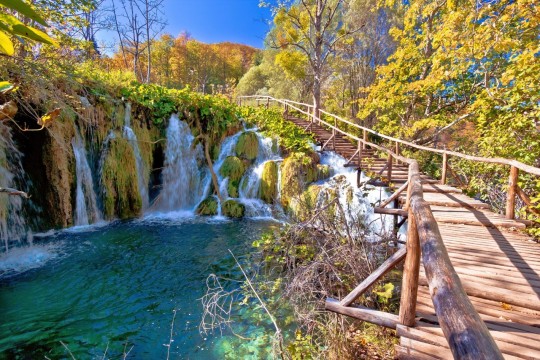
Discover the wonders of nature as we provide a hand-picked list of the world's most breathtaking best national parks in the world. These spectacular natural treasures provide an unrivaled chance for an exceptional vacation experience. Let's take a virtual trip to these alluring international Places to visit to stoke your wanderlust and inspire you to visit the best national parks on earth.
Yellowstone National Park, USA: A Geothermal Wonderland Beckons
The astonishing geothermal wonders of Yellowstone National Park in the United States will mesmerize you. You are about to enter a world filled with bright hot springs, exploding geysers, and the magnificent Grand Prismatic Spring. Experience the mesmerizing view of the renowned Old Faithful geyser in international tour packages and a wide variety of scenery. The park's diverse fauna, which includes grizzly bears, wolves, and bison, offers a unique opportunity to capture the sense of untamed nature.
Canada's Banff National Park: A Magnificent Alpine Paradise
Banff National Park, an alpine wonderland, is located right in the middle of Canada's magnificent Rocky Mountains and is sure to steal your breath away. Enjoy the mesmerizing views of majestic peaks, beautiful glacial lakes, and dense pine woods. Hike through pristine nature, relax in the calming Banff Upper Hot Springs, and observe the exquisite movement of animals, from beautiful elk to robust bighorn sheep, as you delve into a world of adventure. With its captivating glaciers and breathtaking vistas in beautiful national parks in the world, the picturesque Icefields Parkway, which links Banff to Jasper National Park, is a photographer's paradise.
Kruger National Park, South Africa: A Once-in-a-Lifetime Safari Adventure
Explore your inner adventurer in South Africa's enthralling Kruger National Park, a refuge for wildlife. As you go out on an adrenaline safari trip, get up close and personal with the legendary Big Five—lion, leopard, elephant, buffalo, and rhinoceros. Explore the vast savannahs of the park to find a variety of habitats bursting with life. Experience the mystique of the African bush, where every turn hides a new surprise and every glimpse leaves a lasting impression.
Chile's Torres del Paine National Park: Patagonia's Magnificent Beauty
Torres del Paine National Park, located in the center of Chilean Patagonia, is a real nature lover's heaven with other best national parks in the world. Get ready to be mesmerized by its majestic granite peaks, glacial lakes that are stunning turquoise, and vast valleys that inspire awe. Start your multi-day walk on the classic W Circuit for sweeping vistas of the renowned Paine Massif. Explore the untamed nature and make connections with rare creatures, such as the elegant guanacos and soaring Andean condors.
Serengeti National Park, Tanzania: Witness the Great Migration
Discover the delights of Tanzania's Serengeti National Park, where the Great Migration is nature's spectacular performance. Admire the sight of many zebras, wildebeest, and other creatures moving over the huge savannah in search of food. Take in the excitement of this historic occasion in international Places to visit as you capture the spirit of the wild and observe the complex dance of life and survival.
Denali National Park, USA: America's Last Frontier
Denali National Park in Alaska, often referred to as "The Last Frontier," is a land of superlatives. At its heart stands Denali, North America's tallest peak, soaring to a breathtaking 20,310 feet. The park's rugged wilderness, marked by untamed rivers, boreal forests, and alpine tundra, offers an unparalleled experience for adventurers and nature enthusiasts. Visitors can explore the park's pristine landscapes through various activities like hiking, camping, and wildlife viewing. Keep an eye out for grizzly bears, moose, wolves, and a variety of bird species as you immerse yourself in this remote and awe-inspiring wilderness.
Galápagos National Park, Ecuador: A Living Laboratory of Evolution
The Galápagos Islands, part of Ecuador, house the Galápagos National Park, a UNESCO World Heritage Site and a living laboratory of evolution. These remote volcanic islands are famous for their unique and diverse wildlife, including giant tortoises, marine iguanas, and blue-footed boobies. Visitors to the Galápagos have the extraordinary opportunity to witness species found nowhere else on Earth. Explore the pristine landscapes, snorkel in crystal-clear waters teeming with marine life, and follow in the footsteps of Charles Darwin as you unravel the mysteries of evolution in this extraordinary national park.
Conclusion
Are you prepared to go out on a once-in-a-lifetime adventure? Explore the world's most mesmerizing national parks, which promise a combination of magnificent scenery and a deep connection to nature. These national parks are your way to an incredible journey, whether you're an avid photographer, or just looking for a getaway. Prepare to embark on an amazing tour across the most beautiful national parks in the world. Let your curiosity run wild, and make lifelong memories. Your journey starts right now!
2 notes
·
View notes
Text
Buenos Aires, Jan 31 (EFE).- A forest fire in Argentina’s Los Alerces National Park, a UNESCO World Heritage site in the Patagonian province of Chubut, had destroyed 2,300 hectares of land on Wednesday, official sources from the park’s administration told EFE.
The fire has been burning since Jan. 25, and adverse weather conditions, especially strong gusts of wind and high midsummer temperatures, have at times interrupted firefighting efforts.
“We have another week of intense work ahead of us,” said Danilo Otaño, chief ranger of Los Alerces National Park.
Authorities confirmed to EFE that the fire broke out in two different areas of the park and that the causes remain under investigation as arson is suspected.
Some 250 personnel from the federal government, the National Park Service, and the provinces of Chubut and Córdoba are in the area fighting the flames in the seven sectors affected by the fire.
In addition, two water-dropping planes and three helicopters have been deployed, and an amphibious plane will join the operation on Wednesday afternoon.
According to the director of operations of the National Fire Service, Andrés Bosch, 70% of the areas affected by the flames are inside the protected area.
But Otaño, the ranger, said the fires have mostly destroyed transitional Andean vegetation and not the protected larch trees, native conifers of the Argentine and Chilean Patagonian forests that give the park its name.
Located in the province of Chubut, about 2,000 kilometers from Buenos Aires, Los Alerces National Park extends over 259,822 hectares, making it the fifth largest park in the South American country.
In 2017, the park was declared a UNESCO World Heritage Site, in part because of “its impressive scenic beauty” and as “the habitat for a number of endemic and threatened species of flora and fauna including the longest-living population of Alerce trees.”
Alerce trees are the second longest living tree species in the world, they can live between 3,000 and 4,000 years and grow over than 70 meters high. UNESCO says they are a “globally threatened” species.
Tourist services at the park continue to be available, but the authorities recommend “driving with extreme caution” on the stretch of Provincial Route 71 that crosses Los Alerces. EFE
source: https://efe.com/en/latest-news/2024-01-31/wildfire-in-argentinas-patagonia-devastates-more-than-2000-hectares/
it's insane how the patagonian fires are more devastating than the ones in california and nobody gives a shit
13K notes
·
View notes
Text
Can we talk about how Serpent Sol fell behind when trying to be a Mexican inspired MAP?
Good stuff first, the alebrijes are awesome and they put a lot of work with the flora and fauna. All the participants did a beautiful job in each part.
That said... Why is the song not in Spanish, and not even made by Mexican artists (Kiltro is a Chilean band)? How can you be so meticulous in the background and so sloppy in the song choice?
I guess the MAP idea + song came first and the intent of making it "Mexican" came later. But if they really didn't want to give up the song, why not make it about Chile, a country that doesn't get a fraction of attention compared to Mexico?
Fun fact, this post made me look a little bit into alebrijes and apparently they don't have a religious origin, unlike Coco wanted me to believe. I guess that's why they used them in the MAP and not any Aztec symbolism (that I know of, I'm not an expert in that).
0 notes
Text
Ushuaia to the End of the World: Argentina’s Southernmost Wonders

Nestled at the southernmost tip of Argentina, Ushuaia proudly wears the title of "The End of the World." This port city in Tierra del Fuego opens up a world of untouched landscapes, icy waters, and snow-capped peaks that lure adventurers to the edge of the earth. Whether it’s embarking on thrilling treks, cruising through the Beagle Channel, or immersing in the stark beauty of Patagonia, Ushuaia offers an experience unlike any other. Here’s a guide to discovering the wonders of Argentina’s last frontier, where South America meets Antarctica.
The Magic of Tierra del Fuego National Park
The wild beauty of Tierra del Fuego National Park is a must-visit for nature enthusiasts. Spanning across forested valleys, rivers, and glacier-fed lakes, this park captures the raw essence of Patagonia. Hikers can explore a range of trails, from leisurely walks to more demanding treks, leading to breathtaking views of mountains and coastlines.
Highlights:
Laguna Negra Trail: An easy trek with views of dense forests and a quiet, dark lake that appears almost black, hence the name.
Coastal Path: A scenic trail along the coastline, offering views of the Beagle Channel and Chilean islands in the distance.
Lapataia Bay: The final point of the Pan-American Highway and a place to marvel at the pristine waters, lush scenery, and abundant birdlife.
Local Tip: Consider a guided tour to learn about the unique flora and fauna of the park and the rich history of the Yaghan people, the indigenous inhabitants of Tierra del Fuego.
Cruising the Beagle Channel
No trip to Ushuaia would be complete without a cruise through the Beagle Channel, a route taken by Charles Darwin on his famed journey. The channel is known for its surreal seascapes, dotted with tiny islands, penguin colonies, and lighthouses against a backdrop of rugged mountains.
Highlights:
Les Éclaireurs Lighthouse: Often called the "Lighthouse at the End of the World," this iconic landmark stands on a small island in the channel.
Isla de los Lobos: A small island where you’ll find a lively colony of sea lions basking on the rocks.
Isla Martillo: Home to a penguin colony, where you can observe Magellanic and Gentoo penguins waddling along the shore.
Local Tip: For a closer look at the penguins, choose a tour that includes a stop at Isla Martillo. Some operators even allow travelers to walk among the penguins on designated paths!
Glacial Excursions: Martial Glacier
Set above Ushuaia is the Martial Glacier, a remarkable destination for those eager to experience the icy heart of Tierra del Fuego. Accessible by a short drive and a hike, the glacier provides sweeping views of the Beagle Channel and the city below.
Activities:
Hiking: Trails of varying difficulty lead up to the glacier, with panoramic views along the way.
Winter Activities: In the winter months, the area around Martial Glacier becomes a small ski and snowboard resort.
Photography: The glacier and surrounding mountains make for incredible photo ops, especially during the golden hours.
Local Tip: Bring layers, as weather conditions can change quickly at higher altitudes. A good pair of trekking boots will also make the climb more comfortable.
Exploring Ushuaia’s Maritime History
For a deeper understanding of Ushuaia’s history, visit the Museo Marítimo y del Presidio (Maritime and Prison Museum). The museum, housed in a former prison, gives insight into Ushuaia’s past, from its days as a penal colony to its importance in maritime exploration.
Exhibits:
History of Antarctic Exploration: Ushuaia’s role as a gateway to Antarctica is explored through artifacts and exhibits.
Penal Colony History: Learn about the prison’s unique place in Argentine history, including the notorious inmates who were once held there.
Maritime History: The museum explores the region’s seafaring traditions and the maritime life of Tierra del Fuego.
Local Tip: The museum offers guided tours that provide detailed stories of Ushuaia’s history, and its art exhibits also showcase local artists’ works inspired by the region.
Off-Road Adventures to Lake Escondido and Lake Fagnano
For a taste of Tierra del Fuego’s rugged landscapes, an off-road tour to Lake Escondido and Lake Fagnano is ideal. These glacial lakes are surrounded by forests and mountains, offering a stunning contrast to Ushuaia’s coastal views.
Highlights:
4x4 Tours: Ride through forests, muddy paths, and rocky terrain to reach these secluded lakes.
Kayaking and Fishing: For a more active experience, some tours offer kayaking on Lake Escondido or fishing opportunities.
Traditional Argentine BBQ: Many tours include a stop at a rustic lodge for a traditional Argentine BBQ, complete with local wines.
Local Tip: Book this excursion with a reliable operator to experience the scenic, off-the-beaten-path parts of Tierra del Fuego.
The Southern Fuegian Railway: A Scenic Ride
Known as the "Train to the End of the World," the Southern Fuegian Railway once transported prisoners and timber but now offers scenic rides for travelers. The train takes you through the forests of Tierra del Fuego, with stops that showcase waterfalls, snow-dusted peaks, and valleys.
Route Highlights:
La Macarena Waterfall: A scenic spot where the train pauses for photos and a short walk to the waterfall.
Carbajal Valley: Enjoy views of this beautiful valley with its vast peat bogs and lush greenery.
Ensenada Bay: The journey ends with stunning views of the bay and the snow-capped Andes in the distance.
Local Tip: Consider riding the train in the early morning to capture the sunrise over the mountains, making for a magical start to your day.
Dining at the End of the World
After a day of exploring, Ushuaia offers unique dining experiences, many centered around the flavors of Patagonia. Seafood is a highlight, especially king crab (centolla), a local delicacy served fresh from the icy waters.
Must-Try Dishes:
Patagonian Lamb: Known for its tenderness, it’s often served as a traditional asado (barbecue).
Fuegian King Crab: Served in various styles – grilled, in chowders, or simply with lemon and butter.
Chocolates and Sweets: Ushuaia has several chocolate shops that craft artisanal chocolates, perfect for a sweet ending.
Local Tip: Look for restaurants that specialize in local Patagonian cuisine to get a true taste of the region’s flavors.
Conclusion: The End of the World Beckons
Ushuaia is a place where dramatic landscapes meet rich history and vibrant wildlife. From the serene beauty of Tierra del Fuego National Park to the icy depths of the Beagle Channel and the rugged trails of Martial Glacier, Ushuaia offers a sense of adventure at the edge of the earth.
Planning a journey to the end of the world can be simplified with travel agencies like Roomchai Limited, which can tailor trips that showcase the best of Ushuaia and beyond. Whether you’re looking to experience Argentina’s southernmost wonders solo or in a guided group, Ushuaia awaits as the perfect starting point for your Patagonian adventure.
0 notes
Text
Where Can You Find Hidden Vacation Spots?

Exploring well-known destinations can be thrilling, but discovering the best hidden vacation spots in the world offers a unique charm and serenity that mainstream locations can't match. These secret vacation spots are often untouched by mass tourism, offering an authentic and peaceful escape. Here's a guide to some of the most enchanting hidden vacation spots around the globe.
1. Playa del Amor, Mexico
Tucked away in the Marieta Islands, Playa del Amor, or the Hidden Beach, is a secluded paradise accessible only by swimming through a water tunnel. Surrounded by a lush island and clear blue waters, this hidden gem is perfect for those seeking tranquility and natural beauty.
2. Svalbard, Norway
For the adventurous traveler, Svalbard in Norway offers a true Arctic experience. This remote archipelago is a land of polar bears, glaciers, and endless summer daylight. It's one of the best hidden vacation spots in the world for witnessing the raw power of nature.
3. Kyushu, Japan
While Japan is a popular travel destination, the island of Kyushu remains one of its best-kept secrets. Kyushu boasts stunning landscapes, hot springs, and a rich cultural heritage. The lack of crowds allows you to fully immerse yourself in the traditional Japanese way of life.
4. Faroe Islands, Denmark
Located between Iceland and Norway, the Faroe Islands are a collection of 18 volcanic islands with dramatic landscapes, cascading waterfalls, and quaint villages. This remote location is perfect for nature lovers seeking hidden vacation spots that offer solitude and awe-inspiring beauty.
5. Socotra, Yemen
Socotra, an island off the coast of Yemen, is often referred to as the "Galápagos of the Indian Ocean" due to its incredible biodiversity. With its unique flora and fauna, including the otherworldly Dragon’s Blood Trees, Socotra is a secret vacation spot that feels like another planet.
6. Zabljak, Montenegro
Nestled in the Durmitor National Park, Zabljak is the highest town in the Balkans and an excellent base for exploring the rugged mountains, glacial lakes, and canyons of Montenegro. This hidden spot is ideal for outdoor enthusiasts looking for adventure away from the crowds.
7. Kep, Cambodia
Once a French colonial retreat, Kep is a quiet seaside town in Cambodia known for its crab markets and serene beaches. It’s a perfect hidden vacation spot for those who want to relax by the sea while enjoying fresh seafood and stunning sunsets.
8. Jaffna, Sri Lanka
Jaffna, in the northern part of Sri Lanka, is a cultural treasure trove that has been off the tourist radar for years. With its beautiful temples, historic sites, and vibrant local culture, Jaffna offers a unique and enriching experience for those seeking a secret vacation spot in Asia.
9. Aysén, Chile
Aysén, located in the Chilean Patagonia, is a vast and remote region filled with glaciers, fjords, and dense forests. This hidden gem is perfect for adventurers who want to explore untouched wilderness and encounter wildlife in one of the best hidden vacation spots in South America.
10. Taveuni, Fiji
Known as the "Garden Island" of Fiji, Taveuni is a tropical paradise with lush rainforests, waterfalls, and coral reefs. This island remains largely undeveloped, making it an ideal secret vacation spot for those looking to experience the natural beauty of the South Pacific.
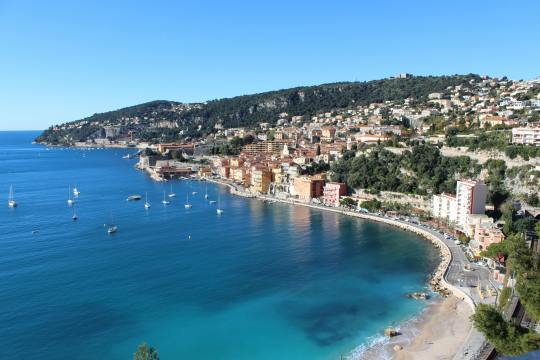
How to Find Your Own Hidden Vacation Spots
Finding hidden vacation spots is all about doing a bit of research and being willing to venture off the beaten path. Look for lesser-known destinations within popular countries, explore remote islands, or seek out national parks that aren’t widely advertised. Traveling during the off-season or opting for eco-friendly accommodations can also lead to discovering some of the best hidden vacation spots in the world.
These secret vacation spots provide a unique opportunity to experience the world in a different way. Whether you're looking for adventure, relaxation, or cultural immersion, these destinations offer something truly special without the crowds. So, pack your bags and embark on a journey to discover the world’s hidden gems!
0 notes